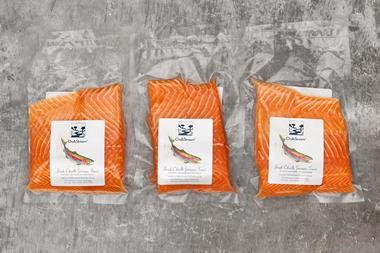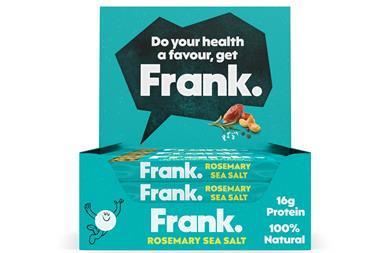Andrew Czarnowski examines the effect EDLP has had on Asda's relentless growth in market share
Asda's story has much of the blockbuster novel to it. Founded by grounded Yorkshire farmers, once dancing on the brink of bankruptcy, re-incarnated as the consumer's champion, acquired by the world's largest retailer. And the leitmotif of constantly growing sales year on year.
Asda's market share continues to increase, up to 14.4% in the quarter to May 27 to within 3.5 share points of Sainsbury. Asda consistently enjoys share highs at Christmas as shoppers flock to its superstores and 2000 was no exception with share for the quarter exceeding 15%.
The latest TNS Superpanel Till Roll data for the 12 weeks to May 29 shows Asda's turnover growth accelerating to 10%. Since the acquisition by Wal-Mart, Asda's sales have been almost consistently in double-digit growth. They slowed in the autumn of 2000 as Tesco returned to promoting, but the rate of growth has accelerated during the spring of 2001. So what is driving this growth? Price cuts? EDLP? Non-foods? And which competitors are suffering?
TNS Superpanel's Retailer Price Track shows that the cumulative effect of the Rollback activity is to provide Asda with an extremely competitive price positioning. Considering the range that Asda sells, its price index has been steadily reducing over the last 18 months to reach a level below 90%. This makes Asda 10% cheaper than the market average for the range of products it sells. It is equally interesting to note that Tesco's index has also been falling, as it seeks to match Asda's activity.
Consumers have clearly responded to Asda's lower prices. Its price cutting began before the acquisition by Wal-Mart. The chart below shows the prices in Asda for Frosties and a pack of Kit Kat. Frosties' price was cut from £1.65 in February 1999 to £1.49 in April 1999, and again, post Wal-Mart, to £1.35 in November 1999. Kit Kat equally tumbled from £1.65 to £1.55 in May 1999 and down again to £1.49 in August 1999. Both brands then remained stable for a long time.
Asda has avoided the trap of allowing lower prices to reduce turnover from the same volume by getting more shoppers through its doors. In an average four-week period, nearly a third of households shop at Asda an increase of over a million shoppers on two years ago. And this despite an increase in store numbers of less than 10%. Asda's shoppers have been tightly targeted. The store has always aimed to meets the needs of the average family. Consequently it trades particularly well among mid market families. More recently, it has made very strong ground among younger families they clearly enjoy the buzz and the personality, which Asda has used to differentiate its in-store environment.
Asda is seen as offering good value and low prices, good non food, and facilities such as dry cleaners, cashpoints and creches are greatly appreciated by customers.
Non food is a clear differentiator for Asda and where Wal-Mart's expertise and buying power will be most brought to bear. An early indicator of the likely effect can be seen in the health and beauty aisle, with huge price cuts made on big brands in everyday categories such as shampoo and deodorants. The effect has been to increase share significantly, as Asda shoppers switched spending from other stores to Asda. Key stores to suffer have been Somerfield and Superdrug, with even fast growing Wilkinson's losing business. However, even more important to Asda's success in this area has been its ability to encourage its shoppers to spend more money overall on these categories.
Rollback and the EDLP concept behind it initially caused many suppliers concern. At one point it seemed that all promotions in Asda would be stopped in favour of lower prices. This is not how things have turned out. Prices have indeed come down. However, promotions continue, with around a fifth of food sales going through on some kind of special deal. This level is actually above that of Tesco, even now that Tesco has returned to promotions after the summer of 2000. However, both Asda and Tesco continue to promote at a significantly lower rate than Sainsbury, Safeway and Somerfield, the hi-lo competitors.
TNS's latest Till Roll Shop Traffic report contains a gains and loss analysis for Asda over the latest year. This shows strong gains made from Sainsbury, Kwik Save and gains even from some of the discounters. The one significant loss made by Asda is to Yorkshire archrival, Morrisons. Having seen off Kwik Save and apparently winning against the Continental discounters, the blockbuster continues, with the next chapter set to be even more interesting.
- Andrew Czarnowski is retail director at Taylor Nelson Sofres
{{COVER FEATURE }}
Close menu
- Home
- Retail & Wholesale
-
Products & Suppliers
- Back to parent navigation item
- Products & Suppliers
-
Product Categories:
- Back to parent navigation item
- Product Categories:
- Alcoholic drinks
- Bakery
- Cereals & breakfast
- Cheese
- Chicken & poultry
- Chocolate
- Confectionery
- Crisps, nuts & snacks
- Dairy
- Fish
- Fresh produce
- Frozen
- Household
- Meat
- Own Label
- Sauces & condiments
- Seasonal
- Soft drinks
- Vaping
- Vegan & plant-based
- World foods
- Suppliers
- People
- Reports & Data
-
Topics A-Z
- Back to parent navigation item
- Topics A-Z
-
Popular topics:
- Back to parent navigation item
- Popular topics:
- Cost of living crisis
- Crime
- Deposit Return Schemes
- Finance
- Government & Regulation
- Health
- Inflation
- Loyalty
- Marketing
- Mergers & Acquisitions
- New Product Development
- Sourcing
- Supply chain
- Sustainability & environment
- Technology
- Ultra Processed Foods
- Vaping
- A-Z all topics
- Content by type:
- Events
- Ask iA (beta)
- Subscribe now
Sign in to comment on this article
Not logged in before? Register for FREE guest access today.
You will be able to:
- Read more stories
- Receive daily newsletters
- Comment on stories
Advert


















No comments yet